 W
WThe Ambush of Geary was a skirmish of the American Revolutionary War fought on 14 December 1776 near Ringoes in Amwell Township, Hunterdon County, New Jersey. Cornet Francis Geary, the leader of a company of dragoons, was shot in an ambush set up by local militiamen.
 W
WThe American Revolutionary War (1775–1783), also known as the American War of Independence or the Revolutionary War, was initiated by delegates from the thirteen American colonies in Congress against Great Britain over their objection to Parliament's taxation policies and lack of colonial representation. From their founding in the 1600s, the colonies were largely left to govern themselves. With the capture of New France in the French and Indian War and confirmation of British victory through the 1763 Treaty of Paris, the British government was left deeply in debt, and the colonial legislatures vigorously disputed being forced to pay the expenses of the war. The Stamp Act and Townshend Acts provoked colonial opposition and unrest, leading to the 1770 Boston massacre and 1773 Boston Tea Party. When Parliament imposed the Intolerable Acts upon Massachusetts, twelve colonies sent delegates to the First Continental Congress to organize a boycott of British goods.
 W
WThe Battle of Fort Washington was fought in New York on November 16, 1776 during the American Revolutionary War between the United States and Great Britain. It was a British victory that gained the surrender of the remnant of the garrison of Fort Washington near the north end of Manhattan Island. It was one of the worst Patriot defeats of the war.
 W
WThe Battle of Long Island, also known as the Battle of Brooklyn and the Battle of Brooklyn Heights, was a military action of the American Revolutionary War fought on August 27, 1776, at the western edge of Long Island in the present-day borough of Brooklyn, New York. The British defeated the Americans and gained control of the strategically important Port of New York, which they held for the rest of the war. It was the first major battle to take place after the United States declared its independence on July 4, and in troop deployment and combat, it was the largest battle of the entire war.
 W
WThe Battle of Sullivan's Island or the Battle of Fort Sullivan was fought on June 28, 1776, during the American Revolutionary War. It took place near Charleston, South Carolina, during the first British attempt to capture the city from American forces. It is also sometimes referred to as the First Siege of Charleston, owing to a more successful British siege in 1780.
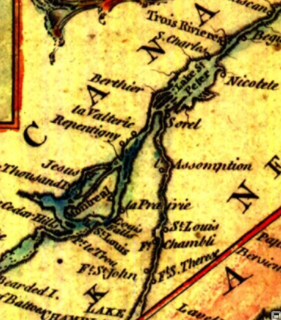 W
WThe Battle of Trois-Rivières was fought on June 8, 1776, during the American Revolutionary War. A British army under Quebec Governor Guy Carleton defeated an attempt by units from the Continental Army under the command of Brigadier General William Thompson to stop a British advance up the Saint Lawrence River valley. The battle occurred as a part of the American colonists' invasion of Quebec, which had begun in September 1775 with the goal of removing the province from British rule.
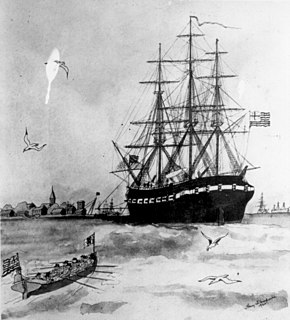 W
WThe Battle of Block Island was a naval skirmish which took place in the waters off Rhode Island during the American Revolutionary War. The Continental Navy under the command of Commodore Esek Hopkins was returning from a successful raid on Nassau when it encountered HMS Glasgow, a Royal Navy dispatch boat.
 W
WThe Boston campaign was the opening campaign of the American Revolutionary War, taking place primarily in the Province of Massachusetts Bay. The campaign began with the Battles of Lexington and Concord on April 19, 1775, in which the local colonial militias interdicted a British government attempt to seize military stores and leaders in Concord, Massachusetts. The entire British expedition suffered significant casualties during a running battle back to Charlestown against an ever-growing number of militia.
 W
WThe Burning of Norfolk was an incident that occurred on January 1, 1776, during the American Revolutionary War. British Royal Navy ships in the harbor of Norfolk, Virginia began shelling the town, and landing parties came ashore to burn specific properties. The town, whose significantly Tory (Loyalist) population had fled, was occupied by Whig (Revolutionary) forces from Virginia and North Carolina. Although these forces worked to drive off the landing parties, they did nothing to impede the progress of the flames, and began burning and looting Tory properties.
 W
WThe First Anglo-Maratha War (1775–1782) was the first of three Anglo-Maratha Wars fought between the British East India Company and Maratha Empire in India. The war began with the Treaty of Surat and ended with the Treaty of Salbai.
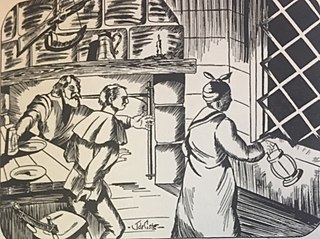 W
WThe Battle of Fort Cumberland was an attempt by a small number of militia commanded by Jonathan Eddy to bring the American Revolutionary War to Nova Scotia in late 1776. With minimal logistical support from Massachusetts and four to five hundred volunteer militia and Natives, Eddy attempted to besiege and storm Fort Cumberland in central Nova Scotia in November 1776.
 W
WThe Battle of Harlem Heights was fought during the New York and New Jersey campaign of the American Revolutionary War. The action took place on September 16, 1776, in what is now the Morningside Heights area and east into the future Harlem neighborhoods of northwestern Manhattan Island in what is now part of New York City.
 W
WThe Invasion of Quebec in 1775 was the first major military initiative by the newly formed Continental Army during the American Revolutionary War. The objective of the campaign was to gain military control of the British Province of Quebec, and convince French-speaking Canadiens to join the revolution on the side of the Thirteen Colonies. One expedition left Fort Ticonderoga under Richard Montgomery, besieged and captured Fort St. Johns, and very nearly captured British General Guy Carleton when taking Montreal. The other expedition left Cambridge, Massachusetts, under Benedict Arnold, and traveled with great difficulty through the wilderness of Maine to Quebec City. The two forces joined there, but they were defeated at the Battle of Quebec in December 1775.
 W
WThe Battle of Iron Works Hill, also known as the Battle of Mount Holly, was a series of minor skirmishes that took place on December 22 and 23, 1776, during the American War of Independence. They took place in Mount Holly, New Jersey, between an American force mostly composed of colonial militia under Colonel Samuel Griffin and a force of 2,000 Hessians and British regulars under Carl von Donop.
 W
WThe Landing at Kip's Bay was a British amphibious landing during the New York Campaign in the American Revolutionary War on September 15, 1776, occurring on the eastern shore of present-day Manhattan.
 W
WFort Lee Historic Park is located atop a bluff of the Hudson Palisades overlooking Burdett's Landing, known as Mount Constitution, in Fort Lee, New Jersey. Native Americans appear to have lived in the area for thousands of years before the arrival of Europeans. Site of George Washington's 1776 encampment opposite Fort Washington at the northern end of Manhattan. Fort Lee is named for General Charles Lee. The site is a reconstruction of the encampment including the blockhouse, battery, quarters as well as a visitors center. It is part of Palisades Interstate Park.
 W
WThe Battle of Moore's Creek Bridge was a battle of the American Revolutionary War fought near Wilmington in present-day Pender County, North Carolina, on February 27, 1776. The victory of North Carolina Revolutionary forces over Southern Loyalists helped build political support for the revolution and increased recruitment of additional soldiers into their forces.
 W
WThe Raid of Nassau was a naval operation and amphibious assault by Colonial forces against the British port of Nassau, Bahamas, during the American Revolutionary War. The battle is considered one of the first engagements of the newly established Continental Navy and the Continental Marines, the respective progenitors of the United States Navy and Marine Corps. The action was also the Marines' first amphibious landing. It is sometimes known as the "Battle of Nassau".
 W
WThe Ottoman–Persian War of 1775–1776 was fought between the Ottoman Empire and the Zand dynasty of Persia. The Persians, ruled by Karim Khan and led by his brother Sadeq Khan Zand, invaded southern Iraq and after besieging Basra for a year, took the city from the Ottomans in 1776. The Ottomans, unable to send troops, were dependent on the Mamluk governors to defend that region.
 W
WThe Battle of Pell's Point, also known as the Battle of Pelham, was a skirmish fought between British and American troops during the New York and New Jersey campaign of the American Revolutionary War. The conflict took place in what is now part of Pelham Bay Park in the Bronx, New York City and the towns of Pelham Manor and Pelham in Westchester County, New York.
 W
WThe Raid on Canso took place on 22 September – November 22, 1776 during the American Revolutionary War. The raid involved John Paul Jones attacking Canso, Nova Scotia and the surrounding fishing villages.
 W
WThe Battle of Saint-Pierre was a military confrontation on March 25, 1776, near the Quebec village of Saint-Pierre, south of Quebec City. This confrontation, which occurred during the Continental Army's siege of Quebec following its defeat at the Battle of Quebec, was between forces that were both largely composed of Canadian militia, including individuals on both sides of the conflict that had been recruited in the same communities. The Patriot forces routed the Loyalist forces, killing at least 3 and capturing more than 30.
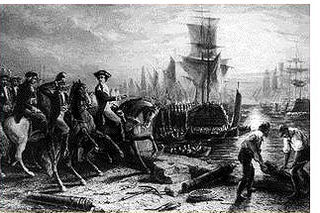 W
WThe Siege of Boston was the opening phase of the American Revolutionary War. New England militiamen prevented the movement by land of the British Army, which was garrisoned in what was then the peninsular city of Boston, Massachusetts Bay. Both sides had to deal with resource supply and personnel issues over the course of the siege. British resupply and reinforcement activities were limited to sea access, which was impeded by American vessels. After eleven months of the siege, the British abandoned Boston and sailed their ships, troops and equipment to Nova Scotia.
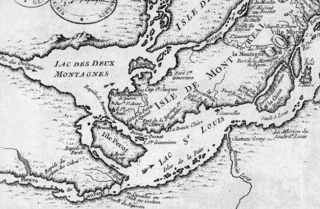 W
WThe Battle of the Cedars was a series of military confrontations early in the American Revolutionary War during the Continental Army's invasion of Canada that had begun in September 1775. The skirmishes, which involved limited combat, occurred in May 1776 at and around the Cedars, 45 km (28 mi) west of Montreal, British North America. Continental Army units were opposed by a small force of British troops leading a larger force of Indians and militia.
 W
WThe Battle of the Rice Boats, also called the Battle of Yamacraw Bluff, was a land and naval battle of the American Revolutionary War that took place in and around the Savannah River on the border between the Province of Georgia and the Province of South Carolina on March 2 and 3, 1776. The battle pitted the Patriot militia from Georgia and South Carolina against a small fleet of the Royal Navy.
 W
WThe Battle of Trenton was a small but pivotal battle during the American Revolutionary War, which took place on the morning of December 26, 1776, in Trenton, New Jersey. After General George Washington's crossing of the Delaware River north of Trenton the previous night, Washington led the main body of the Continental Army against Hessian auxiliaries garrisoned at Trenton. After a brief battle, almost two-thirds of the Hessian force was captured, with negligible losses to the Americans. The battle significantly boosted the Continental Army's waning morale, and inspired re-enlistments.
 W
WThe Battle of Turtle Gut Inlet was an important, early naval victory for the Continental Navy and the future "Father of the American Navy", Captain John Barry. It was the first privateer battle of the American Revolutionary War. The battle resulted in the first American casualty of the war in New Jersey, Lieutenant Richard Wickes, brother of Captain Lambert Wickes. It was the only Revolutionary War battle fought in Cape May County.
 W
WThe Battle of Valcour Island, also known as the Battle of Valcour Bay, was a naval engagement that took place on October 11, 1776, on Lake Champlain. The main action took place in Valcour Bay, a narrow strait between the New York mainland and Valcour Island. The battle is generally regarded as one of the first naval battles of the American Revolutionary War, and one of the first fought by the United States Navy. Most of the ships in the American fleet under the command of Benedict Arnold were captured or destroyed by a British force under the overall direction of General Guy Carleton. However, the American defense of Lake Champlain stalled British plans to reach the upper Hudson River valley.
 W
WThe Battle of White Plains was a battle in the New York and New Jersey campaign of the American Revolutionary War fought on October 28, 1776, near White Plains, New York. Following the retreat of George Washington's Continental Army northward from New York City, British General William Howe landed troops in Westchester County, intending to cut off Washington's escape route. Alerted to this move, Washington retreated farther, establishing a position in the village of White Plains but failed to establish firm control over local high ground. Howe's troops drove Washington's troops from a hill near the village; following this loss, Washington ordered the Americans to retreat farther north.